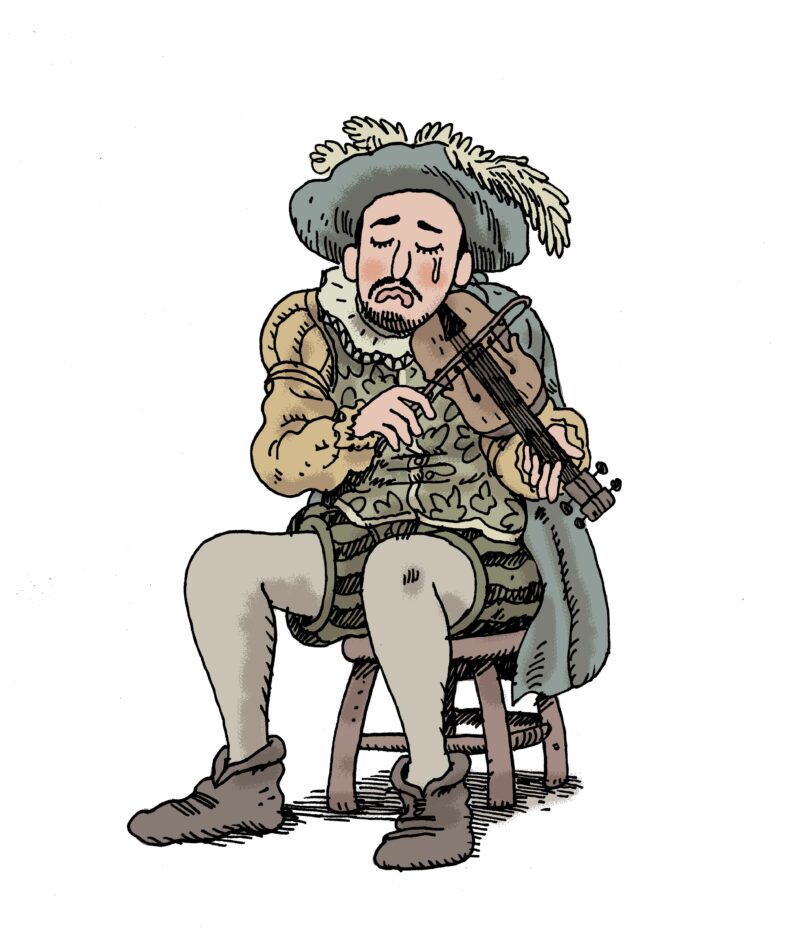In 1540, Henry the VIII ordered Thomas Cromwell to lure six musicians from Italy for the sole purpose of improving the court’s music. They made it to Canterbury, where the jailer Joseph Babcotte, unaware of the king’s plan, confiscated their instruments: six viols, two violins, two violas, and a violoncello. Two of the men died in captivity, and their violins went missing. The four survivors eventually left England with their instruments. Only one of them returned, finally reaching the king’s court.
In 1566, the jailer’s son, George Babcotte, at age twenty-four, made his first reported appearance playing the violin, accompanying a translated Ludovico Ariosto play at a carnival in London’s exclusive Gray’s Inn. Had he been inspired by his father’s captives? “His playing was truly the saddest sound I have ever heard,” John Lyly observed in a letter to Edward de Vere, the man some doubters credit as being the “real” author of Shakespeare’s works. “It moved the whole of the crowd to tears repeatedly.” With the ascension of Queen Elizabeth I to the crown in 1558, all prayers and Catholic rituals during funeral services were discouraged, making way for a Protestant overhaul, which enforced a strict code of conduct for each class of procession. In 1584, a “funerary violinist” was officially added to the heralds of the College of Arms to play at the burial of anyone with the status of baron or above. Babcotte thus became the first public face of this mysterious and maligned subgenre of music.
You have reached your article limit
Sign up for a digital subscription and continue reading all new issues, plus our entire archives, for just $1.50/month.
Already a subscriber? Sign in





